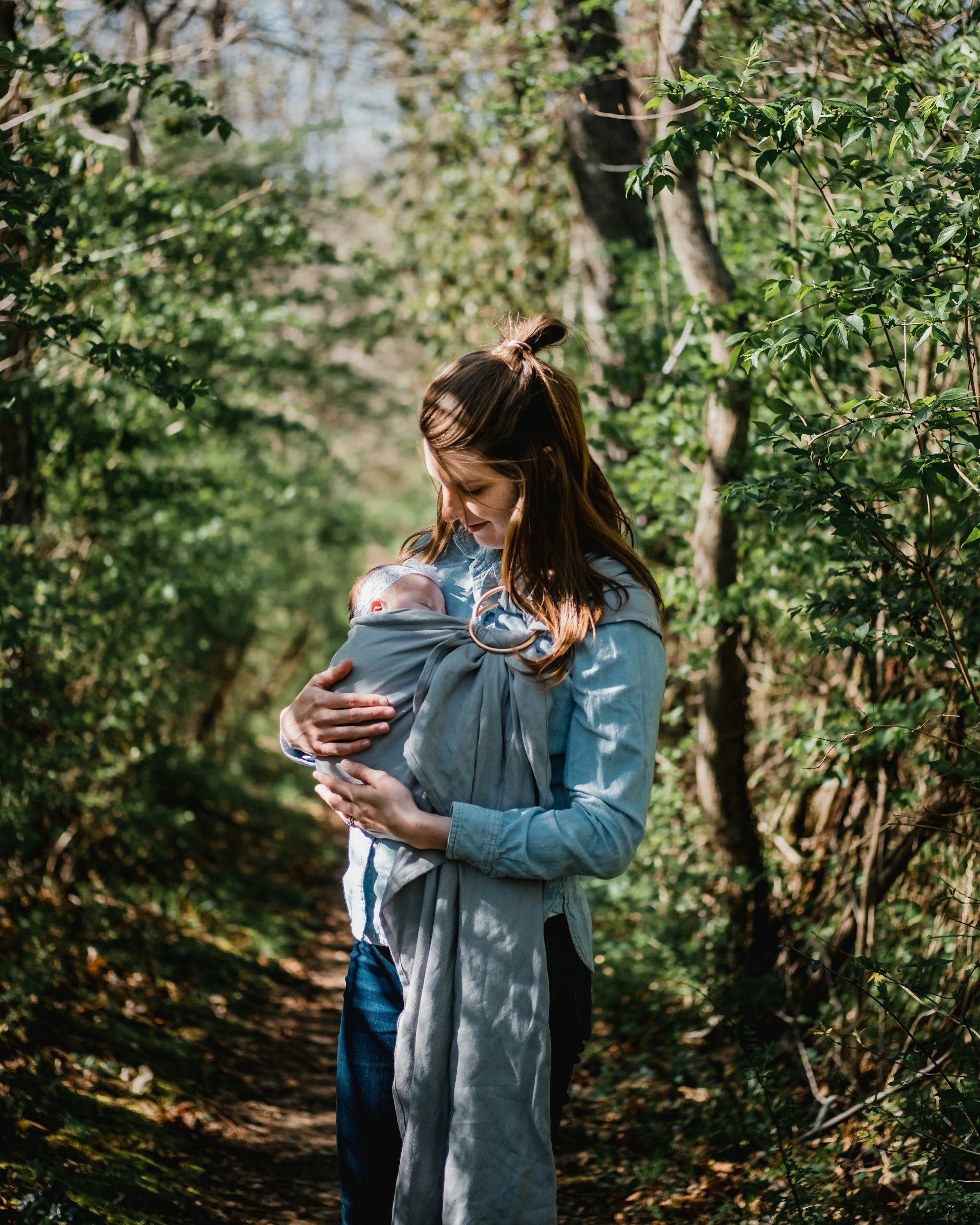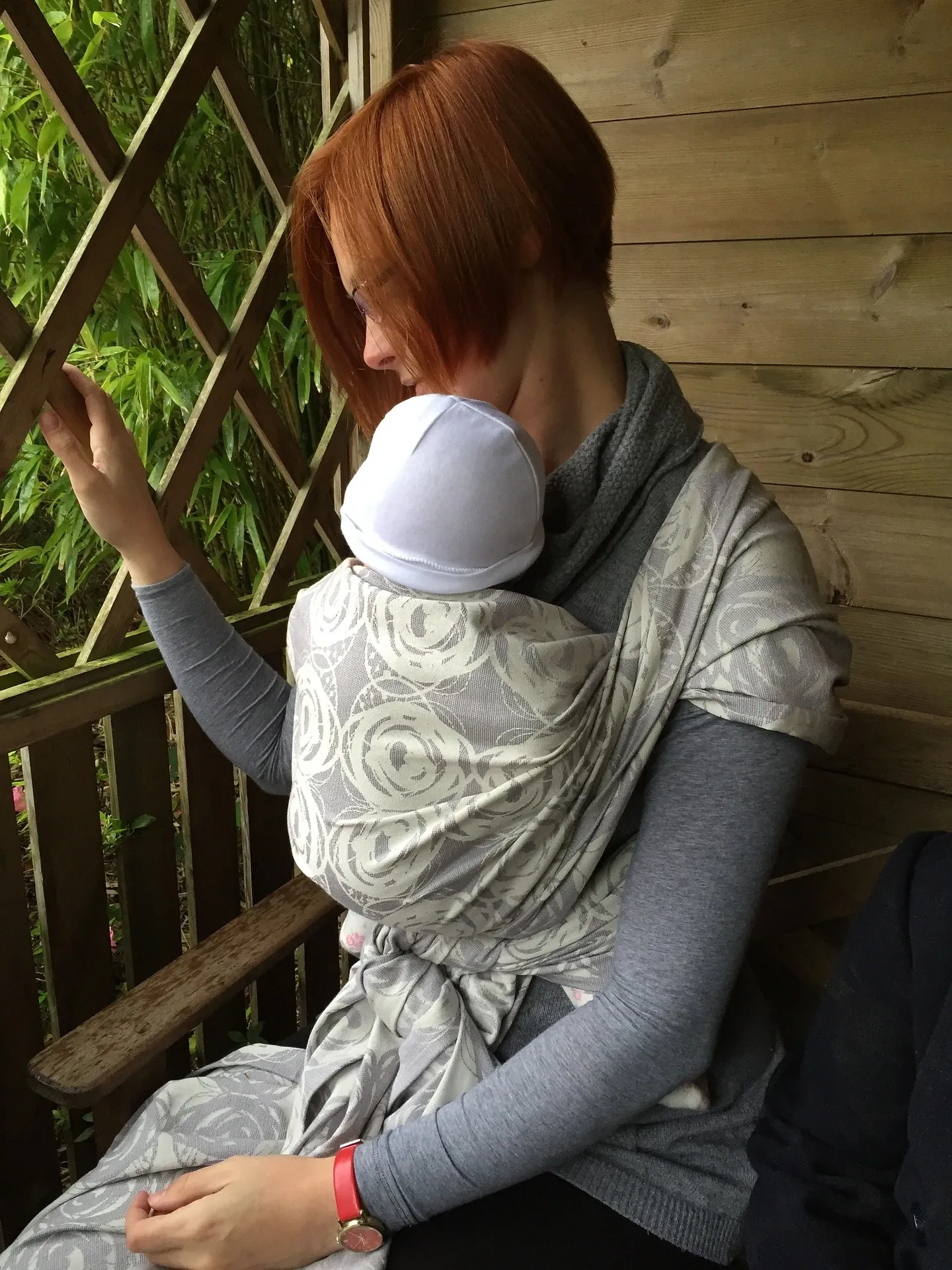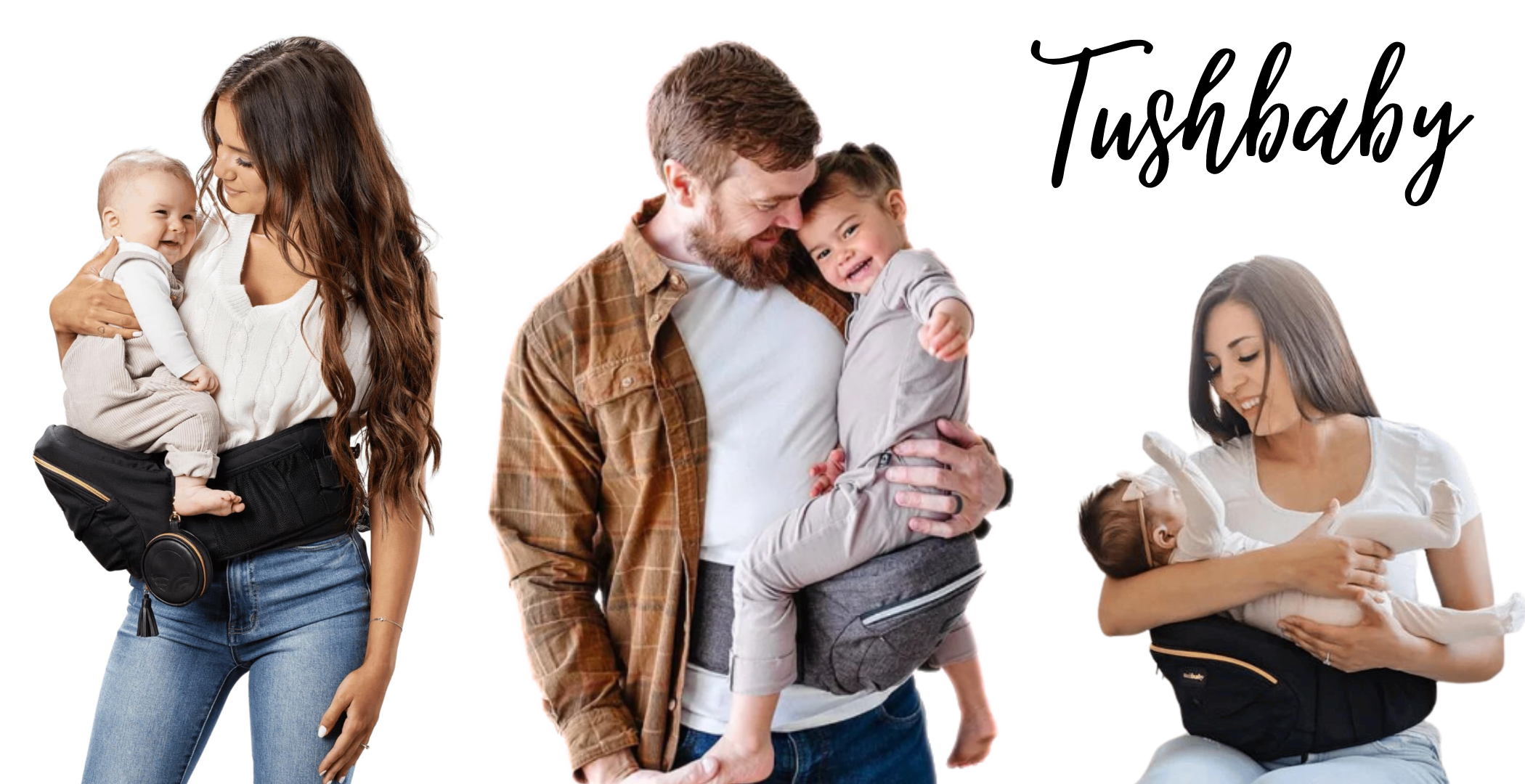Babywearing
Babywearing can increase a mother's chances of breastfeeding by making it easier for her to keep her baby close, which can promote bonding and help the baby to latch on correctly.

Breastfeeding Your Baby on the Move
Babywearing is the practice of carrying a baby or young child in a carrier that is worn on the body. This can include traditional carriers such as slings, wraps, and mei tais, as well as more modern options like structured carriers or babywearing shirts. The goal of babywearing is to keep your baby close to you, which can have both practical and emotional benefits.
Babywearing can increase a mother's chances of breastfeeding by making it easier for her to keep her baby close, which can promote bonding and help the baby to latch on correctly. When a baby is held close to the mother, it can also be easier for the mother to recognize her baby's hunger cues. In addition, babywearing can also make breastfeeding more convenient for the mother, since she can breastfeed her baby while still being able to carry on with other activities.
It can also help to improve milk production and flow, as the baby's suckling movement can stimulate the release of oxytocin, which causes the milk to "let-down" and flow.
When your baby is close to you, they can hear your heartbeat and your voice, making them feel more secure and relaxed and more likely to latch easily.

Babywearing Benefits
- Carrying your baby in a carrier while shopping or in crowded places can provide a secure environment for your baby.
- Using a carrier to hold your baby allows for the convenience of having your hands free to perform other tasks, such as shopping, reading, cooking, cleaning, and even exercising.
- While babywearing, you can interact and engage with your older children.
- With the use of a baby carrier, breastfeeding mothers have the ability to nurse their baby while on the move, and the carrier can also provide a more discreet option for breastfeeding in public places.
- Studies have found that premature infants tend to gain weight more quickly when they are held and touched frequently, which is something that babywearing can facilitate.
- Baby has full access to the breasts, which can be useful in promoting milk production, particularly for those mothers who have adopted the baby. In particular, babywearing can facilitate milk supply establishment.
- Using a carrier to hold a toddler can provide comfort and soothing during heightened emotions.
- Many infants find comfort and security in being carried in a carrier and as a result, tend to cry and fuss less. Studies have shown that infants who are carried in a sling can cry up to 43% less than those who are not.
- Babywearing can be enjoyable, as it allows the parent to interact closely with the baby and observe their reactions, leading to shared moments of fun and enjoyment.
- These carriers are often more cost-effective when compared to strollers.
- Carriers such as slings can be utilized during instances where your baby is struggling to fall asleep, as the natural movement while being worn can often help the baby to relax and drift off to sleep.
- Babywearing can also be used to facilitate bonding between fathers and their babies.
- Research suggests that the experience of being held in a carrier, such as a sling, can be similar to the environment of the womb, which can make the transition from the womb to life outside of it less disruptive for babies and also encourage feelings of security in them.
- Infants who are carried in a carrier such as a sling are exposed to a more dynamic environment, with a wider range of visual stimuli, and tend to be more alert as a result, which is associated with faster cognitive and developmental growth.
- By being held close to the parent's face, the baby is able to hear and observe conversations and language, which can promote quicker development of speech and language.
- The movement that comes with being carried in a sling can be beneficial for infants with acid reflux, as the gentle rocking motion can help to ease discomfort and soothe the baby. This can help the baby to be more comfortable and settle better.
- Some infants may experience less gas discomfort when they are held upright in a carrier, such as a sling.
- Certain baby carriers are designed to promote skin-to-skin contact, which offers various benefits for both baby and parent.
Types of Slings for Babywearing
The Wraparound Sling
A babywearing wrap is a versatile and popular type of sling made from a simple piece of cloth that is tied around the parent's body. It can be worn around both shoulders and around the waist for support and can be used to carry a baby on the back or hip. Woven or stretchy fabric materials such as silk, wool, linen, or hemp are commonly used for baby wraps as they provide easy access to the baby and support for larger babies. While babywearing wraps distribute the baby's weight well, they may take some practice to learn how to properly use.
The Pouch Sling
Pouch slings are a type of baby carrier that is easy for parents to use. They are designed to fit a baby's shape and can be easily put on by slipping over the parent's head. Pouch slings do not have rings and often have zippers or snaps for adjustments. They are convenient for quick insertion and removal of the baby, but may not be suitable for older babies as the added weight can cause discomfort for the parent.
The Ring Sling
A ring sling is a type of baby carrier that uses a piece of cloth that is threaded through two rings, which is then wrapped around the parent's body from the shoulder to the opposite hip and back up to the shoulder. The end of the cloth is then threaded through the ring to create a buckle-like effect. The weight of the baby keeps the material securely in place. This type of sling can be used to carry a baby in both a sitting and a lying position, and is commonly made from materials such as cotton, hemp, silk brocade, or lightweight twills. It is important to ensure that the rings are securely stitched before purchasing a ring sling. They are suitable for both babies and toddlers, and are also well-suited for breastfeeding as the rings allow for quick adjustments.
The Soft Carrier and Backpack
Asian-inspired slings, such as mei-tai are designed for easy use and usually feature shoulder straps. These types of slings are typically well-suited for larger babies.
Tips for Buying Baby Carriers
When choosing a baby carrier, it's important to consider your specific needs and preferences. Some things to consider include:
- Whether you plan to breastfeed discreetly.
- The weight of your baby
- The quality of the carrier, and the type of fabric. In hot weather, it may be more comfortable to choose a lightweight fabric that won't add extra heat, and in cold weather, a thicker fabric will provide more warmth.
- It's also a good idea to think about the color and design of the carrier, as it's something you'll likely be wearing frequently. It might be important to consider if the carrier is easy for both parents to use, and if the baby father has any color or design preferences.
- Sizing is also an important factor, so make sure to choose a carrier that fits you comfortably, and provides enough space for larger breasts if necessary.
- It should also be easy to adjust and use.

The Tushbaby Hip Carrier
With its ergonomic design and comfortable waistband, Tushbaby provides optimal support for you and your baby. Say goodbye to shoulder and back pain from traditional carriers, as Tushbaby evenly distributes your baby's weight, relieving strain and promoting better posture.
Babywearing Safety and Tips
- It's important to frequently check your baby carrier to ensure that it is in good condition and that your baby is being safely held.
- As a new babywearer, you may want to try different positions with the sling until you find one that is comfortable for both you and your baby.
- When carrying your baby in the sling, make sure that your baby is not curled up so tightly that their chin is touching their chest, which can block their airway. There should always be at least a finger's width of space between your baby's chin and chest.
- Always check that your baby's back is supported, and ensure that nothing is covering your baby's face.
